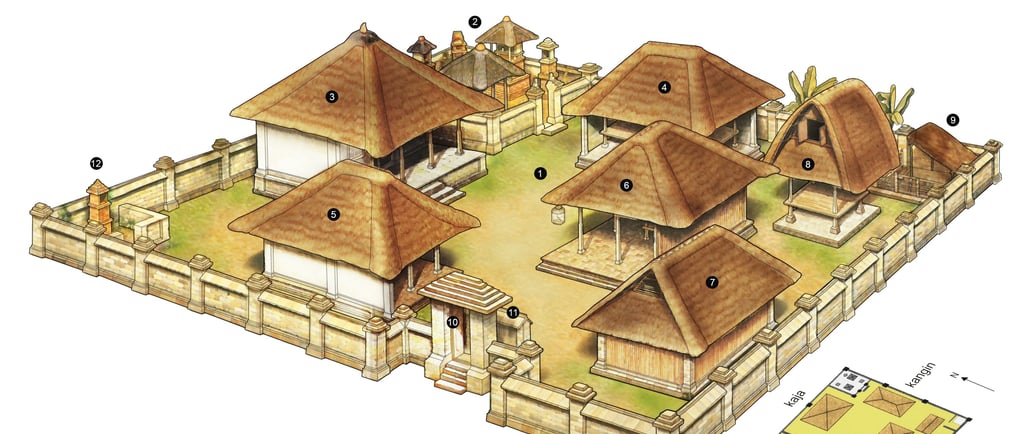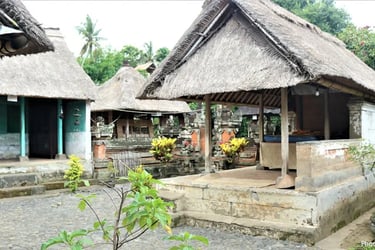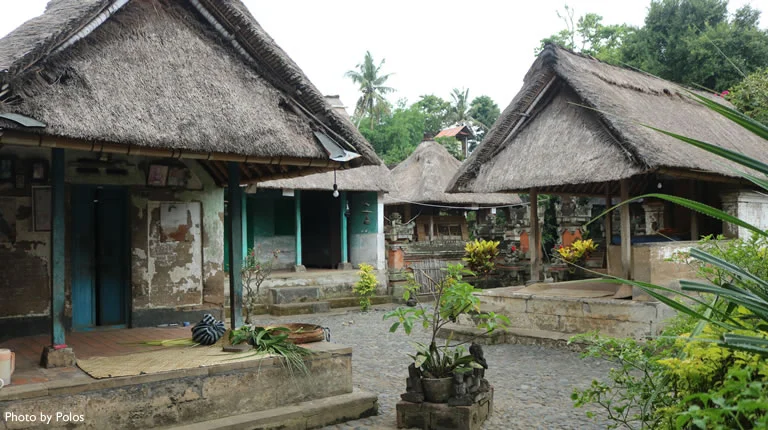Exploring the Balinese Compound House: A Symbiosis of Harmony and Culture
12/17/20245 min read


Understanding the Tri Hita Karana Concept
The Tri Hita Karana philosophy is a fundamental concept in Balinese culture that embodies the principles of harmony and balance in life. This philosophy emphasizes the interconnectedness of three essential elements: the relationship between human beings and God, the interactions among fellow humans, and the connection with nature. Each component plays a crucial role in maintaining equilibrium within the Balinese compound house and the broader community. The first element, known as "Parahyangan," symbolizes the spiritual relationship individuals maintain with God. In the context of the Balinese compound house, this is often reflected in the placement of shrines and temples, where rituals and ceremonies are performed to honor divine forces. These religious elements are not only structural components but also serve as focal points that encourage spiritual reflection and reverence among the inhabitants. The second aspect, "Pawongan," centers on the social relationships within the community. It emphasizes the significance of fostering strong connections among individuals, families, and broader social groups. In a Balinese compound house, this manifests through communal spaces designed for family gatherings, celebrations, and social interactions. The layout of these homes promotes a sense of belonging and encourages cooperation and mutual support within the community. The third element, "Palemahan," pertains to the relationship between humans and the natural environment. This aspect stresses the importance of respecting and protecting nature, viewing it as a source of sustenance and spiritual well-being. In Balinese design, elements such as gardens, water features, and traditional landscaping are intentionally integrated, allowing residents to connect with their surroundings while maintaining ecological balance. Overall, the Tri Hita Karana philosophy is a guiding principle that shapes not only the physical layout of Balinese compound houses but also the values and interactions of their inhabitants. Understanding this concept is essential for appreciating the cultural depth and harmony that characterize Balinese life.




Architectural Features of a Balinese Compound House
The architectural features of a Balinese compound house are distinct and deeply rooted in the cultural context of Bali. These homes are typically arranged around a courtyard, promoting a sense of openness and connection to nature. The layout encourages interaction among family members and fosters a communal lifestyle, which is a core aspect of Balinese culture. The central courtyard serves as a gathering space while also allowing natural light and ventilation to permeate the living areas. Within the compound, the family temple, or "pura," holds a central position, emphasizing the importance of spirituality in daily life. This temple is often situated at the highest point in the compound, symbolizing the connection between the physical and spiritual worlds. The presence of this sacred space underscores the balance between family life and community rituals, thereby reinforcing cultural values and practices. The living quarters, which include separate areas for sleeping and communal activities, are designed with a focus on functionality and privacy. These spaces are traditionally constructed using local materials such as bamboo, stone, and wooden beams, reflecting sustainable building practices and local craftsmanship. The architecture adheres to traditional aesthetic principles of asymmetry, where design elements are intentionally varied to echo the natural landscape and promote a harmonious environment. Outdoor spaces, such as gardens and backyards, play a significant role in the Balinese compound house. These areas are not merely for ornamental purposes; they serve as extensions of the living space, allowing residents to engage with nature. The gardens are often lush with tropical plants and may include functional features such as vegetable plots or fruit trees, which emphasize self-sufficiency and ecological awareness. In conclusion, the architectural elements of a Balinese compound house illustrate a deep relationship between functionality, family, and the natural environment. Each aspect—from layout to material choice—reflects the culture's ethos of harmony and respect for nature.
The Role of the Gate and Wall in Balinese Compound Design
The design of Balinese compound houses is characterized by a harmonious interplay of cultural beliefs and architectural elements. Among these elements, the gate and wall serve both functional and symbolic roles, contributing significantly to the overall ambiance of the dwelling. The gate, often elaborately designed, functions as a threshold that demarcates the boundary between the outside world and the inner sanctum of family life. It invites guests into private realms while simultaneously protecting the family's intimate space.The wall surrounding the compound further enhances this sense of separation. Constructed from local materials, these walls are commonly adorned with intricate carvings and religious symbols, reflecting the craftsmanship that is integral to Balinese culture. Beyond aesthetics, the wall provides a crucial sense of privacy and security, safeguarding the inhabitants from external disturbances. This envelopment creates a serene environment conducive to the spiritual and everyday activities that occur within the compound.The careful construction and thoughtful placement of gates and walls within Balinese compounds embody the community’s reverence for family life and spiritual practices. These fundamental architectural elements serve as symbols of protection, harmony, and a commitment to cultural values, ensuring that the sanctity of family life is maintained within the embrace of their surroundings.
Balinese Compound House: A Reflection of Community Values
The Balinese compound house serves as a profound representation of community values and social relationships within the Balinese culture. These unique architectural styles are not merely structures for living; they are an embodiment of communal spirit and harmony. In Bali, the concept of 'desa' highlights the importance of community, and the traditional compound houses reflect this ethos. Families are often interconnected through these homes, fostering a sense of shared responsibility and mutual respect among neighbors.Central to the functionality of a Balinese compound is the communal space that encourages interactions among families. The layout usually includes several structures surrounding a shared courtyard, which acts as the heart of the compound. This arrangement provides opportunities for communal activities, such as rituals, celebrations, and collaborative agricultural tasks, reinforcing the bonds between individual households. Such interactions are vital not only for maintaining social ties but also for preserving cultural traditions that have been passed down through generations.The design and organization of these homes highlight the interdependence prevalent in Balinese society. The architectural elements exhibit a collective identity, allowing families to express their individual values while contributing to a larger narrative. The strong emphasis on communal welfare is reflected in the shared responsibilities of maintaining these living spaces. Even the aesthetic aspects of the houses, adorned with local art and spiritual symbols, serve to bond the occupants and their neighbors through a shared cultural heritage.In essence, the Balinese compound house transcends mere physical presence; it is a vital component of the social fabric that binds individuals together. The architectural practices cultivated over centuries have played a crucial role in fostering social cohesion and enhancing the cultural identity of the Balinese people. Through these compounds, the community not only preserves its legacy but also cultivates a spirit of togetherness that is at the core of their existence.
